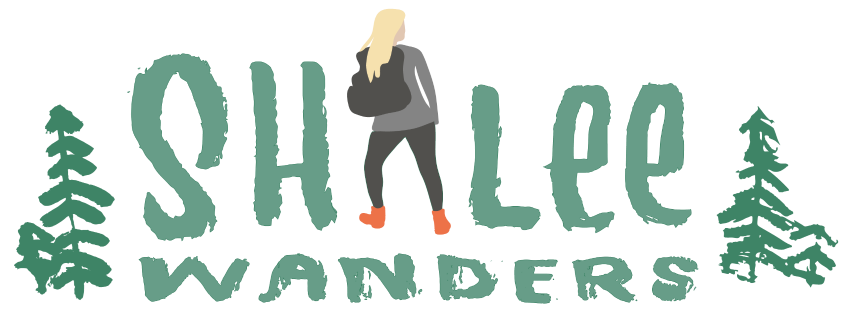Granite Peak: Everything to Know About Climbing Montana’s Tallest Mountain
November 23, 2020


Distance: 28 Miles
Elevation: 12,808 Feet / 4,500ft Elevation Gain
Route: Southwest Ramp/Couloir
The pinkish-orange sunrise lit the valley and lakes below as we hobbled over steep rockfall toward the summit of Granite Peak. The clear skies and warm sun hid the fact an impending snowstorm was arriving in less than 24 hours, ready to coat the slopes under 16 inches of fresh snow. The unexpected weather cut our initial summit bid from three days down to two. We were roughly 12 miles in, and the summit was in clear view.
Rewind 12 hours, our three-person team sat eating spam and watching helicopters circle the mountain in raging winds attempting rescues. Conditions were less than ideal, even for us far below at basecamp. The gusts were so extreme we placed extra rocks in every corner of the tent to keep it from cutting loose and blowing across the tundra. The only good news was that the terrible weather kept the pesky "pee goats" away, who are legendary in this area for pawing and attempting to gnaw through tents after being attracted to the salt of, you guessed it, human pee.
Eventually, the hum of helicopters faded and darkness settled. We pretended to sleep most of the night, waking each time the tent shook with gusts. Exhausted from the 9-mile approach hike the day before, we wearily rose with our alarm, layered up, and begin to hike shortly after 4:00 am. Headlamps guiding our path, we trekked toward the mountain shadows ahead.
It wasn’t long before the sun rose and the helicopters from the night before returned. Deep in the backcountry without access to resources, we could only guess what was happening. Approaching from the southwest we were taking the steep, but direct, southwest couloir route. The newer approach to the summit avoids the exposed class 4 scramble from the north but takes a class 3 approach that includes an increased risk of rockfall.
It was a beautiful day on the mountain. Daybreak brought calmer winds and the sun was warming our faces as we followed fixed ropes up the scramble. Multiple groups were on the mountain, unsurprising on a late-summer holiday weekend. Shortly after 8:25am on September 6th, 2020, our team climbed the final boulder and stood on the summit of Granite Peak, Montana's tallest mountain.
From the summit, we watched search and rescue pilot Mark Duffy make seven short-haul rescues from the mountain. It was the morning of his son’s funeral, who had lost his life while fighting wildfires in Oregon the week before. His heroism saved two injured climbers and returned a lost life back to his wife and family. This post is for him.

The Approach
Granite Peak is situated in the remote wilderness of the Beartooth Mountain Range. At 12,808, it towers above the majority of other peaks in Montana. To give some perspective, the highest point in Glacier National Park is 10,466 feet, over 2,000ft shorter than Granite.
There are a couple of different ways to approach Granite Peak. We chose to summit via the Southwest Couloir route. For this route, most people hike and camp at either Aero or Skytop Lakes. Our group chose the Skytops Lake route to put us closer to the mountain for summit day.
To camp at Skytop Lakes, a 9-mile approach hike is required. The hike begins at 45.0505418, -109.9101180. If you do not have a 4WD vehicle, there is an alternative parking lot roughly a half-mile down the road.
Pass the old miners cabin and join the main hiking trail toward Lady of the Lake. Truthfully, this was the most annoying section of the approach. I have a pet peeve with hiking, which is gaining elevation just to lose it. That is the best description of this section. By the time you make it to Lady of The Lake, you are lower than when you started, even if it feels like you should be much higher.
Beyond Lady of The Lake, some route finding is required. Because this is still a fairly new approach to Granite Peak, all trails to the Southwest Couloir require some navigation. Roughly a mile past Lady of the Lake a fork appears at the start of a grassy field along the Creekside. The left is the route section to Aero Lakes. Stay right for Skytop Lakes until you pass the second creek crossing further down the field. If you pass the second section, the trail fades out rather quickly and you will know to turn out. From here, the trail is straightforward to follow until you get to Lone Elk Lake.

Lone Elk Lake is a perfect spot to take a lunch break on your approach. It’s over halfway to SkyTop Lakes and the shoreline provides a scenic spot to rest your legs. However, past this section, the route becomes extremely vague. We made the mistake by following a rogue set of cairns that eventually disappeared and made us circle the entirety of Rough Lake, adding over a mile to the already long trek.
Once hitting Lone Elk Lake, follow the path left up an outcrop of rocks. The trail is easy to follow along the western edge of the lake until you reach the northern end. From there, a series of small boulder fields, creek crossings, and incorrect cairns can easily lead a group astray.

Red= Incorrect Approach, Green = Correct Approach via Natural Atlas
To correctly approach Sky Top Lakes, cross Sky Top Creek at the northern end of Lone Elk Lake. From there, hug the flat shoreline of the southeastern section of Rough Lake until you pass the northernmost section of the lake. From there, you will need to cross the creek again and follow a series of cairns up a rocky gully before you hit the waterfall.
After making your way up the gully, you’ll hit the beginning of the Sky Top Lakes plateau. Hug the western edge of the lakes for another mile and pitch camp wherever a flat spot is found.
Extra tip: Download a topographic map that works offline. Natural Atlas is my preferred app that is available for iPhone users.


Summit Day
Most hikers begin the climb between 4-5:30am, ensuring there is more than enough time to summit before afternoon storms can threaten the peak. From the cluster of tents at basecamp, there are multiple routes/ cairns that guide you to the base of the mountain. After some initial rock-hopping across large boulder fields, you'll reach the first milestone named "The Tongue", an easy-to-distinguish gully leading up the southwest face.
Snow clings to this section for most of the summer, but a September approach made for a clear ascent. Unlike the “Froze to Death” Plateau route, the Southwest Couloir does not require rope and crampons if ascending late enough in the season.
From the top of the Tongue, a long traverse across easy (but annoying) loose scree and rock will eventually run into an obvious 3-foot cairn will make the switchback where the ramp gully begins. You’ll also probably see a stack of hiking poles next to the cairn from climbers ahead. If you are using trekking poles, you will not need them beyond the cairn as it is a scramble the rest of the way to the summit.


The ramp is where the fun begins. The class three scramble is guided by a series of fixed ropes up the gully. A helmet is strongly recommended during the section because there is a high risk for rock falls. If you are climbing ahead of another group, step carefully and try to avoid areas with loose rocks and boulders.
If you’ve already researched this hike, I’m sure you’ve read the online forums where many people voice the Southwest Ramp is just as dangerous as the class 4 knife-edge route due to the rockfall danger. If you are uncomfortable on scrambles or exposed ridges, the ramp is a great alternative. Pack a helmet, navigate smartly with groups ahead and behind you, and communicate any dangers.
Personally, I thought the Southwest Ramp was fun. The Knife Edge looked much more daunting.
At the top of the ramp gully, there are multiple ways to scramble over the lip to the exposed ridge. Stay slightly to the right for the easiest route. Once out of the gully, only about 200 more vertical feet separate you from the summit. Turn left and scramble the remaining ridgeline to the summit.

Packing List
When it comes to climbing Granite Peak, there are a few additional items you need to pack beyond your ordinary “backcountry hike” guide. I’ve detailed our full list packing list below
- Helmet
- Hiking Socks (3-4 pair)
- Wind Jacket
- Camp Stove
- Lighter/Matches
- Backcountry stove/utensils
- Camp Knife
- Hat
- Gloves
- Lightweight food/backcountry meals
- Sleeping Bag
- Tent
- Toilet Paper/ Kleenex
- Emergency Beacon
- External Charger
- Hiking pants
- Thermals
- Ziplock Bags (for trash, leave no trace)
- First Aid
- Tylenol
- Water Purifier
- Toiletries
- Water Proof Boots
Want more high point guides? Here is my full guide to climbing Mount Whitney.

At any given moment, Shalee is either lost, hunting for ice cream, or obsessively planning her next adventure.
Born and raised in rural Michigan, she began exploring the shores of Great Lakes as a teen, often sleeping in her car to save money. Eventually, her urge to explore pushed beyond her Midwest borders. Today, Shalee shares her tips and stories to thousands of readers interested in adventure and outdoor tourism. Her pack now includes two spunky hiking cats and her partner, Josh. Learn more about her here.
Join the Adventure





Seriously! Hiking Granite peak in Montana? That is so #epic. And the story about Marc Duffy? Excellent post Shalee!
Great info Shalee. Well written. We are heading there to attempt a summit in early August— reading everything possible. I’m more interested in an attempt from the SW now…